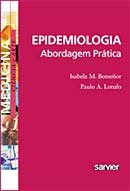Abaixo do blogue do Boston Globe, a proporção de vagas para residência em áreas básicas: medicina de família, clínica médica, obstetrícia e ginecologia e pediatria nos hospitais de Boston, o centro nevrálgico da medicina ultra-especializada mundial. Vou verificar a proporção no Brasil, mas na Faculdade de Medicina da USP, 44% das vagas de ingressantes são para essas especialidades. Isso não significará, nem em Boston, nem em São Paulo, que todos terminarão como "generalistas". A maioria irá para especialidades e subespecialidades.
By Elizabeth Cooney, Globe Correspondent
Fourth-year medical students discovered today where they will spend the next stage of their medical training. This year the Match Day formula sorted more than 15,000 US medical school seniors into programs at teaching hospitals. There was a small uptick in family medicine choices nationwide, coming at a time when primary care doctors are in short supply. At the four medical schools in Massachusetts, primary care specialties -- family medicine, internal medicine, obstetrics/gynecology, and pediatrics -- drew almost half the soon-to-be MDs graduating from the three schools in Boston. At University of Massachusetts Medical School in Worcester, the tally was higher, consistent with its mission focusing on primary care. Both levels are similar to previous years. -- Boston University School of Medicine: 46 percent-- Harvard Medical School: 44 percent -- Tufts University School of Medicine: 46 percent -- University of Massachusetts Medical School: 60 percent

Nenhum comentário:
Postar um comentário